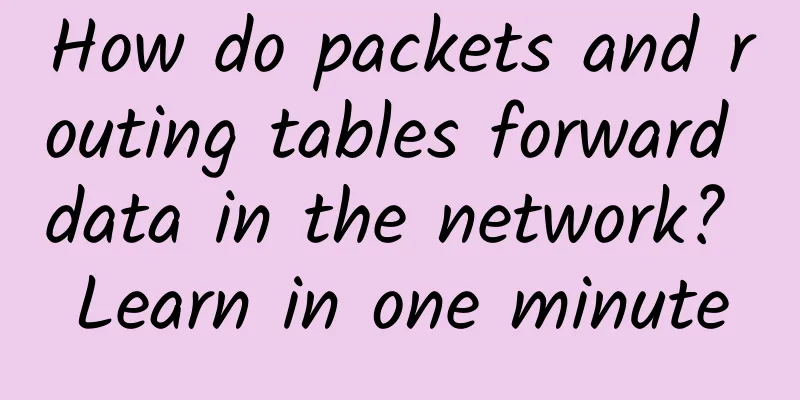Quickly understand the core components based on Netty server

|
Thanks to Netty's excellent design and encapsulation, developing a high-performance network program has become very simple. This article briefly introduces several core components of Netty from a simple server-side implementation, hoping to be helpful to you. Quickly implement a serverWe hope to quickly implement a simple master-slave reactor model through Netty. The thread group corresponding to the master reactor receives the connection and the acceptor creates the connection. The read and write events of the client established with it will be handled by the thread pool corresponding to the slave reactor: Based on this design, we write the following code through Netty, and you can see that we have done the following things:
Finally, call bind to start the server and listen to the connection results asynchronously through addListener: For the data sent by the client, we will add sequential processing through ChannelInboundHandlerAdapter. As shown in the code, our execution order is InboundHandlerA->InboundHandlerB->ServerHandler. For this, we give the code of InboundHandlerA. The content of InboundHandlerB is the same and will not be shown: And ServerHandler is:
Parse the client's data and reply with Hello Netty client: We used telnet to find the following output from the server, which is consistent with what we described above: Then we send message 1, and we can see that all inbound channelRead methods are triggered: Then we reply hello netty client, triggering OutBoundHandler according to the added flashback: Detailed explanation of the core components in NettyChannel InterfaceChannel is Netty's encapsulation of primitives such as bind, connect, read, and write in the underlying class socket, which simplifies the complexity of our network programming. At the same time, Netty also provides a variety of ready-made channels that we can use according to our personal needs. The following are several commonly used channels in TCP or UDP that I often use.
EventLoop InterfaceIn Netty, all channels are registered to an eventLoop. Each EventLoopGroup has one or more EventLoops, and each EventLoop is bound to a thread responsible for processing events of one or more channels: Here we also briefly give the run method in NioEventLoop, which inherits from SingleThreadEventExecutor. We can roughly see that the core logic of NioEventLoop is essentially to poll all channels (socket abstractions) registered to NioEventLoop to see if there are ready events, and then pipeline and channelHandler with channelHandlerContextEach channel event will be handled by the channelHandler, and the channelHandlers responsible for the same channel will be connected by a logical chain of pipeline. The relationship between the two will be encapsulated into channelHandlerContext. ChannelHandlerContext is mainly responsible for the interaction between the current channelHandler and other channelHandlers on the same channelpipeline. For example, when we receive write data from the client, the data will be handled by the channelHandler on the pipeline. As shown in the following figure, after the first channelHandler completes the processing, each channelHandlerContext will forward the message to the next channelHandler of the current pipeline for processing: Assuming that our channelHandler executes ChannelActive, if we want to continue propagation, we will call fireChannelActive: Looking at its internal logic, we can see that it gets the next ChannelHandler of the pipeline through AbstractChannelHandlerContext and executes its channelActive method: The idea of callbackWe can say that callback is actually a design idea. Netty is asynchronous and non-blocking for connection or read and write operations, so we hope to perform some response processing when the connection is established. Then Netty will expose a callback method when the connection is established for users to implement personalized logic. For example, when our channel connection is established, the underlying layer will call invokeChannelActive to obtain our bound ChannelInboundHandler and execute its channelActive method: Then the channelActive method of our server-side ServerHandler will be called: Future asynchronous monitoringTo ensure the efficiency of network server execution, most of Netty's network IO operations are asynchronous. Taking the listener I established for connection settings as an example, after the current connection is successful, a java.util.concurrent.Future will be returned to the listener. We can use this f to obtain whether the connection result is successful: We step into addListener of DefaultPromise and find that it adds a listener to determine whether the connected asynchronous task Future is completed. If completed, notifyListeners is called to callback the logic of our listener: |
Recommend
Short Video Technology Guide: Evaluation of the Top 5 Short Video Solution Providers in China
Statistics from 2016 show that the average daily ...
Out-of-the-box infrastructure connectivity options
When it comes to connecting network devices acros...
GreenCloudVPS 9th anniversary, $15/year KVM-2GB/20GB/2TB/San Jose and other data centers available
GreenCloudVPS recently launched its 9th anniversa...
A story about computer network concepts: gateway, DHCP, IP addressing, ARP spoofing, routing, DDOS, etc.
What is the role of a host computer gateway? Supp...
Availability monitoring tool for large networks
[[184858]] No enterprise can live without network...
Unveiling the "veil" of smart courts, the old look is transformed by 5G applications
In a society ruled by law, it is normal to go to ...
DogYun New Year's Day promotion: 30% off on Dynamic Cloud, 20% off on Classic Cloud, 100 yuan off on Dedicated Server per month, 50% off on Lucky Wheel
DogYun (狗云) hasn't offered discounts for more...
Aruba and Digital China work together to build a smart campus project
On September 19, during the Atmosphere 2017 confe...
What happens if you apply for 8G memory on a machine with 4GB physical memory?
Hello everyone, I am Xiaolin. This morning I saw ...
spinservers: $89/month - E3-1280v5, 32G memory, 1TB NVMe hard drive, 10Gbps bandwidth server
spinservers has released the latest July promotio...
5G RedCap is coming soon! But how difficult is it to fully commercialize it?
According to 3GPP's plan, the latest version ...
Wangsu Technology launches edge AI gateway to help developers build AI
On July 11, Wangsu Technology announced the launc...
Server-Speaks-First is a bit of a bummer, protocol detection and opaque ports in Linkerd 2.10
[[416375]] This article is reprinted from the WeC...
A brief analysis of Web real-time communication technology!
Web-based instant messaging The server can immedi...
Maxthon Hosting: CN2 GIA line VPS monthly payment starts from 54 yuan, and you can choose Los Angeles/Hong Kong/Korea and other data centers
At present, the best domestic access lines for ov...



![[Black Friday] DesiVPS: 1Gbps unlimited traffic high-security VPS annual payment of $26.99, free IP change once a month, Los Angeles data center](/upload/images/67cac01b325a5.webp)





